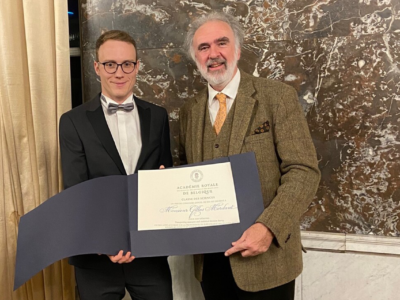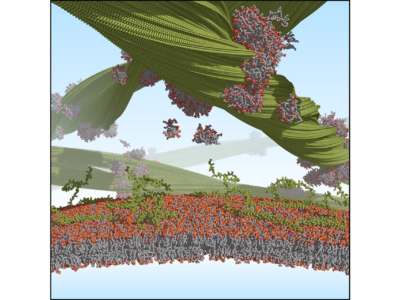23.01.2023
Colour images from the shadow of a sample
A research team at the University of Göttingen has developed a new method to produce X-ray images in colour. In the past, the only way to determine the chemical composition of a sample and the position of its components using X-ray fluorescence analysis was to focus the X-rays and scan
10.01.2023
Gilles Mordant awarded annual prize
Mathematician and data scientist Dr. Gilles Mordant from the Institute for Mathematical Stochastics at the University of Göttingen, headed by MBExC-member Prof. Dr. Axel Munk, has received the prize for the Annual Contest (section mathematics) of the Royal Academy of Science, Letters and Fine Arts of Belgium. The prize is
02.01.2023
The MBExC welcomes Junior Research Group leader Dr. Thomas Frank
With beginning of the new year, neuroscientist Dr. Thomas Frank took up a MBExC Junior Research Group for Zebrafish Neurobiology. Together with his team, he aims on understanding how the brain processes smells and how that leads to specific actions and flexible behaviors. Neuronal information processing at multiple scales, from
23.12.2022
Award for merits in basic research and the Göttingen Campus
The Göttingen physicist and MBExC-member Prof. Dr. Stefan Hell has received the “In Publica Commoda” medal of honor from the University of Göttingen. With this award, the university honors his merits in basic research at the Göttingen site and the development of the Göttingen Campus. Link to the press release
23.12.2022
Season’s Greetings
Season’s greetings and best wishes for a happy, healthy and successful year 2023!
22.12.2022
Hearing with light
A new generation of cochlear implants aims to make hearing easier for people with hearing disorders. Tobias Moser wants to make new worlds of sound accessible to those affected with a new generation of hearing aids. The so-called optical cochlear implants are an example of therapies based on findings from
20.12.2022
Ceremony for Awarding the “Werner von Siemens Ring” to Stefan Hell
On December 13, MBExC member Stefan Hell was ceremoniously handed over the “Werner-von-Siemens-Ring” 2022 by the “Werner von Siemens Ring Foundation”. He was awarded the individually craftet ring for his invention of super-resolution microscopy, which allows living cells to be observed at the molecular level. BioNTech scientists Uğur Şahin, Özlem
25.11.2022
New CRC 1565 at University Medical Center Göttingen
The German Research Foundation (DFG) is funding a new Collaborative Research Center (SFB) led by the University Medical Center Göttingen (UMG) starting January 2023. The new CRC 1565, entitled “Molecular mechanisms and interplay of gene expression processes”, will receive 10 million euros for an initial funding period of four years.
25.11.2022
New member of the EMBO Young Investigator Programme
As one of 24 young investigators, MBExC member Prof. Dr. Hauke Hillen is elected as a new member of the EMBO Young Investigator Programme. The programme supports excellent group leaders who have been in independent positions for less than four years and have an excellent track record of scientific achievements.
15.11.2022
Discovery in Parkinson’s research: Lipids influence the formation of protein clumps
After Alzheimer’s, Parkinson’s is the most common neurodegenerative disease in the world. More than six million people worldwide suffer from it. In this disease, alpha-synuclein proteins form thread-like structures called fibrils. When these fibrils clump together, they probably damage nerve cells. A research team has now shown for the first











